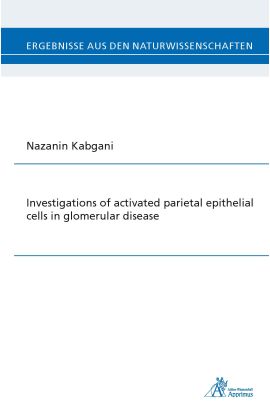Focal segmental glomerulosclerosis “(FSGS)” is responsible in the majority of renal patients for progression to end-stage renal disease (D’Agati VD et al. 2011). Considering that parietal and visceral epithelial cells play important roles in the pathogenesis of rapidly progressive glomerulonephritis “(RPGN)” and FSGS, the major aim of this work was to provide a highly efficient and reliable approach for isolation and generation of a primary culture of parietal epithelial cells and podocytes from two different transgenic mice.
The activation and proliferation of parietal epithelial cells is one of the fundamental principles in the pathology of this cell. To this end, this study investigated the parietal epithelial cellular response to growth factors such as epidermal growth factor “(EGF)” and hepatocyte growth factor “(HGF)” in vitro and in vivo as well as transforming growth factor beta “(TGF-ß)” in vivo.
In summary, a novel and specific tool to study the biology of primary parietal epithelial cells and podocytes was established. Second, using these primary cells, we showed that EGF and HGF signaling pathways are potential targets for the treatment of FSGS.
| Autor | Kabgani, Nazanin |
|---|---|
| Lieferzeit | 3-4 Tage |
| Gewicht | 0.175 kg |
| Erscheinungsdatum | 12.12.2016 |
Ergebnisse aus den Naturwissenschaften
Investigations of activated parietal epithelial cells in glomerular disease
Kurzbeschreibung
Focal segmental glomerulosclerosis “(FSGS)” is responsible in the majority of renal patients for progression to end-stage renal disease (D’Agati VD et al. 2011). Considering that parietal and visceral epithelial cells play important roles in the pathogenesis of rapidly progressive glomerulonephritis “(RPGN)” and FSGS, the major aim of this work was to provide a highly efficient and reliable approach for isolation and generation of a primary culture of parietal epithelial cells and podocytes from two different transgenic mice.

